The marine ecosystem’s biodiversity, coral reefs, performs essential functions for the planet; instead, it is more vulnerable than ever, particularly to human activities. One of the leading causes of loss and degradation of reefs is frequently using inappropriate sunscreens, which are believed to be safe. When mixed with ocean water, these substances tend to inhibit the growth and reproduction of the corals, leading to a bleached effect, which causes long-lasting alteration in the reef environment. Therefore, the main aim of this guide is to speak on the importance of the appropriate choice of sunscreen to protect our skin from sunlight while ensuring that the underwater ecosystems don’t get hurt. You take the understanding of the criteria that support a ‘reef-friendly’ and skin-safe sunscreen and empower yourself to look for such products to ensure that while the sea ecosystems are protected, you, as a user of such products, stay safe under the sun.
What is reef-safe sunscreen, and why is it important?
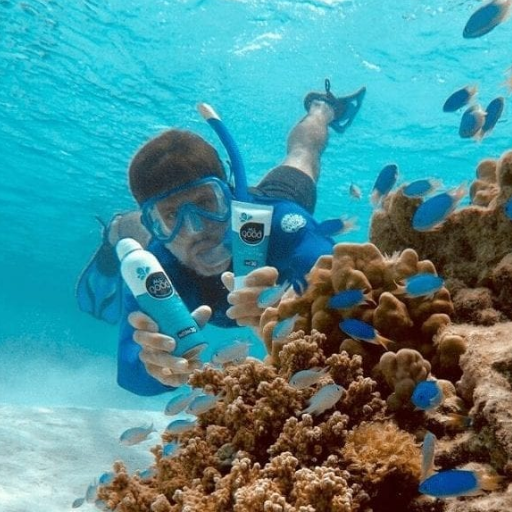
Reef-safe sunscreen is a specially formulated type of sunscreen that contains no toxic compounds that can endanger the health of oceanic ecosystems. Active ingredients such as oxybenzone and octinoxate, found in many conventional sunscreens, have been shown to cause harm to corals, alter the genetic material of sea creatures, and interfere with ecology. On the other hand, reef-safe sunscreens use non-nano zinc oxide or titanium dioxide-based formulations to ensure that they remain on the skin surface and do not penetrate the waters. Applying reef-safe sunscreen should be a priority to reduce anthropogenic stress on vulnerable ocean regions, ensure that ocean life is diverse, and protect the delicate coral reefs important for marine animals and people living in coastal areas.
Understanding the impact of traditional sunscreens on coral reefs
Synthetic sunscreens such as oxybenzone, octinoxate, and octocrylene are detrimental to the ecosystems of the coral reefs to a large extent. Being harmful to coral DNA, reproduction, and growth, they contribute to modifying the coral’s colors, known as coral bleaching. Even the slightest concentration of these compounds does not come without serving adverse ecological impacts as they lessen the resilience of corals to climatic changes and other stressors. These compounds, moreover, do not degrade and maintain themselves in the marine habitat, thus prevailing over time and influencing the population of numerous organisms in a reef ecosystem. It is estimated on a global scale that 14000 tons of sunscreen are discharged into the coral reefs, contributing to the further reduction of the most critical environments. One should opt for reef-safe sunscreen to lessen such impacts and consider environmental sustainability.
Key ingredients to look for in reef-safe sunscreen
The two ingredients to look out for in a reef-safe sunscreen are non-nano zinc oxide and titanium dioxide. These minerals are a physical form of protection from the sun’s rays and have been known to be safe for the environment, as they do not break down into particles that can harm aquatic organisms. It is also essential to exclude chemicals like oxybenzone, octinoxate, octocrylene, and avobenzone because they cause coral bleaching and toxicity in the oceans. It is always best to use products marked reef-safe or reef-friendly and have precise ingredients free of harmful chemicals for both the skin and the environment.
The difference between mineral and chemical sunscreens
Mineral sunscreens are also known as physical sunscreens. They contain main ingredients like zinc oxide and titanium dioxide, which provide a film on the skin that physically scatters and reflects the damaging rays. These sunscreens offer a great solution as they can be applied directly onto dry and sensitive skin without causing any irritation due to their properties and enhance either prevention or damage. They also do not require time to soak in as they work evenly across the skin. More importantly, they also protect against UVA rays and UVB rays.
Chemical sunscreens, contain organic compounds such as oxybenzone, avobenzone, and octisalate to absorb UV rays and transform them into heat released from the skin. These preparations take around 15-30 minutes to start working after they are applied to the skin. The upside is that they provide a more appealing aesthetic when applied, particularly for daily use.
How do I choose the best reef-safe sunscreen for my needs?
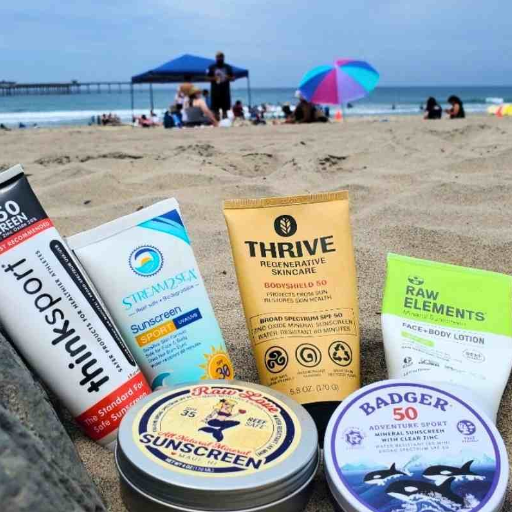
There are a few essential things to consider when looking for the best reef-safe sunscreen, so first check for formulations that have the label ‘reef safe’ while also ensuring they do not contain oxybenzone and octinoxate, which are known to cause harm to coral reefs. Preferably go for mineral-based sunscreens with non-nano versions of titanium dioxide and zinc oxide, as they are less damaging to the ocean. Furthermore, define your needs, such as SPF level, water resistance, and skin type, including allergies, sensitivities, and other factors. And ensure proper verification of certification and ingredients in the product concerning safety for the environment and the skin.
Factors to consider: SPF, water resistance, and skin sensitivity
SPF (Sun Protection Factor): SPF indicates the level of protection a sunscreen provides against UVB rays, which are primarily responsible for sunburn. Dermatologists recommend using sunscreen with at least SPF 30, which blocks approximately 97% of UVB rays. Higher SPF values, such as SPF 50 or above, provide marginally more excellent protection but must still be reapplied every two hours for optimal efficacy.
Water Resistance: Water-resistant sunscreens are essential for swimming, exercising, or sweating outdoors. The label will indicate whether the product remains effective for 40 or 80 minutes in water or during heavy perspiration. Relying after swimming or towel drying is critical, as water resistance does not mean waterproof.
Skin Sensitivity: To prevent irritation, choose hypoallergenic and fragrance-free formulas for sensitive skin. Opt for mineral sunscreens with zinc oxide or titanium dioxide, which are gentler on the skin than chemical filters. Conduct a patch test beforehand to identify adverse reactions and ensure compatibility with your skin type.
Top reef-safe sunscreen brands and products
- ThinkSport SPF 50+ – This mineral-based sunscreen uses non-nano zinc oxide for broad-spectrum protection. It is free from harmful chemicals like oxybenzone and octinoxate, making it safe for your skin and the ocean’s ecosystems.
- Badger Clear Zinc Sunscreen SPF 40 – This product contains transparent zinc oxide and organic ingredients, providing adequate UV protection without impacting marine life. It’s also biodegradable and comes in recyclable packaging.
- Raw Elements Face and Body SPF 30 – Known for its water-resistant, non-nano zinc formula, this sunscreen is certified natural and provides reliable protection for extended outdoor activities. It is also EWG-approved and designed with reef-safe principles in mind.
Comparing mineral sunscreens: zinc oxide vs. titanium dioxide
Zinc oxide and titanium dioxide are both practical ingredients in mineral sunscreens. However, specific differences exist. As evidenced from the literature, zinc oxide is more popular because it has a broader space of coverage in UVA and UVB shielding than titanium dioxide, which mainly absorbs UVB and slightly covers the shorter UVA bandwidth. Additionally, it is less likely to produce a white film when applied on the skin than other variants containing clear or non-nano zinc. Nonetheless, titanium dioxide adds a smoothing effect when it is included in formulations to assist with the comfort of the sunscreen. However, when non-nano alternatives are applied, they are said to be environmentally friendly due to their reduced impact on coral reefs. In general, the final decision will rely on the individual’s tolerance of the skin and the particular use conditions. Still, plenty of formulations utilize these two components together for coverage and protection.
Are all “reef-friendly” sunscreens truly safe for marine life?

The expression “reef-friendly” is not an official term; thus, there is a great deal of variety for the products as labeling these is loose. Most sunscreen lotions advertised as reef-safe do not contain harmful substances such as oxybenzone and octinoxate. Still, they do have other substances, such as preservatives or emulsifiers, that pose a risk to the ecosystem. Even mineral sunscreens containing zinc oxide or titanium dioxide can be harmful if the particles are uncoated or nano-sized. These can disturb delicate marine life processes. It is good that they have started applying reef-friendly labels, but these do not help to ensure the product is entirely safe. To minimize the environmental impact, choosing sunblock certified by various authoritative organizations and complements that do not allow product runoff is always advisable.
Decoding sunscreen labels and marketing claims
Gaining clarity in understanding sunscreen labels and marketing strategies can be problematic due to the lack of common terminology and uniform regulations. Phrases like “reef-safe” and “eco-friendly” have become more marketing slogans than scientifically recognized terms. Such phrases give the impression of lesser destruction to the marine environment, but there is no legal basis for such phrases, and these can be differently interpreted. Certifications from organizations like the Environmental Working Group (EWG) or endorsements from other NGOs are likely to help identify genuine environmentally friendly products. In addition, they must look for active non-nano particles of zinc oxide or titanium dioxide and avoid benzenes, octanoate, and parabens, as these corrode the ecosystem and the coral reefs.
Also, phrases like ‘broad-spectrum protection’ and ‘water-resistant’ have been legally defined to mean the capability to protect against both UVA and UVB rays and the alleviation from water for a specified time frame, respectively, in the U.S. On the contrary, terms like ‘chemical-free’ and ‘natural’ remain primarily unregulated, and consumers are left to search through the list of ingredients to determine the validity of those statements. To succeed in the sunscreen market, it is essential to understand these complexities and take special note of products that offer quality information and necessary certification.
The controversy surrounding oxybenzone and octinoxate
The controversy surrounding the use of Oxybenzone and Octinoxate has drawn a significant amount of attention due to their potential health and environmental consequences. Scientists have argued that these chemicals, widely used in sunscreens, may be responsible for coral bleaching when these products dissolve in the oceans, contributing to the degradation of marine ecosystems. They also pose great concern due to their capability to penetrate the body through the skin and increase the risk of endocrine dysregulation and alteration of the hormone system, which can be detrimental. Although these two chemicals are considered safe by agencies like the FDA at a low concentration, other studies have shown the need for further research. This has led some states like Hawaii and Palau to pass legislation against selling sunscreens containing these ingredients owing to their effect on coral reefs. Other sunscreen users who wish to switch to other sunscreen types usually buy mineral-based sunscreens containing zinc oxide or titanium dioxide, which is safe for coral reefs and causes fewer problems.
Understanding the latest research on sunscreen ingredients and coral reefs
Some researchers have argued that using some chemical sunscreen ingredients like oxybenzone and octinoxate hurts coral reefs. These compounds have been demonstrated to negatively affect the growth, reproduction, and even the integrity of the DNA in coral reefs, with just even low proportions that are as little as parts per billion (ppb). However, some core technical aspects include the threshold concentration of oxybenzone; in some instances, the recorded levels are as low as 62 parts per trillion (ppt). In addition, the rise of water temperature and UV radiation is also a factor in neutral conditions, further accounting for stress to the corals as a breath of many consequences of the harsh chemicals.
As a solution, mineral-based sunscreens containing zinc oxide and titanium dioxide have come into the limelight. However, it should also be noted that these chemicals still pose a danger to marine ecosystems, especially when those formulations contain nanoparticles of the said minerals and they are not adequately dispersed. As such, it is advised that non-nano mineral sunscreens are used as they are reef-safe and minimally stress the ecological system. Further research on the interaction between sunscreen and the marine ecosystem will aid in improving the formulation of these products and the overall health of coral reefs.
How effective are reef-safe sunscreens in protecting against UV rays?
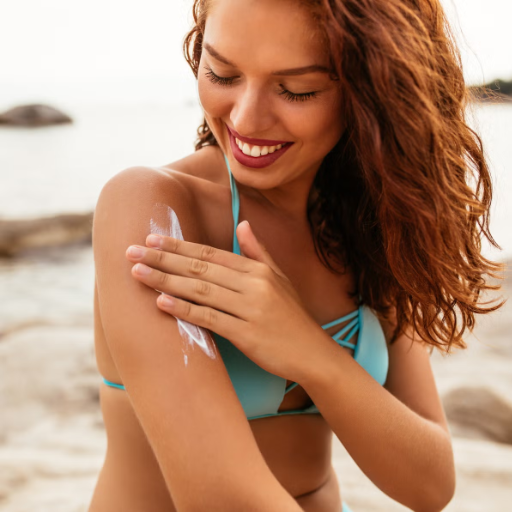
Because they are composed of either non-nano zinc oxide or titanium oxide, reef-friendly sunscreens are effective UV blockers. In other words, these mineral compositions provide complete protection by creating a barrier that repels and absorbs all types of UV radiation. Mineral sunscreen works as well as its counterparts, which use chemicals, but one must use them correctly to achieve the desired levels of coverage. To this end, it is necessary to apply the lotion quite thickly and uniformly and apply the cream after it has been washed off by swimming, sweat, or extended exposure to the sun.
Comparing SPF ratings and broad-spectrum protection
Sun Protection Factor refers mainly to the amount and degree of protection a sunscreen can provide against UVB radiation, which is responsible for sunburn and induces skin cancer. For example, SPF 30 sunscreen lets about three percent of the UVB rays hit the skin, whereas for SPF 50, approximately two percent can penetrate the skin. A higher SPF rating gives a little more protection but not enough since hyperprotection can injure the skin due to a lack of follow-ups.
On the contrary, broad-spectrum sunscreen completely protects one’s skin against UVB and UVA rays. UVA rays can age the skin and even lead to skin cancer by reaching deeper into the tissues. Hence, one should be careful to pick out sunscreen with the words “broad-spectrum” as it ensures the skin is well protected. It is also essential to not forget that no sunscreen will ever be 100% good; however, applying sunscreen combined with a hat or remaining in shaded areas significantly cuts down the risk of UV exposure. However, the reapplication of sunscreen, regardless of the SPF of the lotion, should always come before any activities, such as going into the water or after heavy sweating.
Application tips for maximum sun protection
To enhance the effectiveness of the sunscreen, I always apply it generously on all the exposed skin and other missed areas, such as the ears, neck, and the tops of my feet. For complete body application, I measure about one ounce, equivalent to a shot glass; I apply it at least fifteen to thirty minutes before outdoor exposure to allow proper binding onto my skin. The act of reapplying is always of the essence, so I reapply every two hours or immediately after swimming or sweating. I also prefer a water-resistant formula when I am involved in prolonged outdoor activities. I layer sunscreen with other protective measures, such as wearing UPF-rated clothing and wide-brimmed hats. This ensures protection from the harmful effects of ultraviolet rays as well.
Reapplication guidelines for water activities
Observing the recommended time, which correlates to sun safety Measures on Reapplying Sunscreen, is necessary for sun protection. And consulting with dermatologists, who usually recommend reapplication of an SPF every 80 minutes when engaging in water activities and using water-proof formulations. To comply with these standards, purchase sunscreens that have “waterproof for up to 40 or 80 minutes milliseconds” markings. When you leave the water, towel off any excess water from your skin before using the lotion again to ensure even distribution and balance. The SPF factor should be 30 or higher to offer protection against broad ranges of both UVA and UVB. Engaging in other protective measures, such as putting on a rash guard approved to have a 50 + certified UPF rating coupled with sunscreen, will provide adequate protection during extended periods of exposure to water.
What are the legal regulations for reef-safe sunscreens?

Regulations regarding reef-safe sunscreens vary from region to region but generally concentrate on banning harmful oceanic life ingredients such as oxybenzone and octinoxate. For instance, Hawaii and Palau have placed bans on these chemicals in sunscreen due to the contributed coral bleaching. Similarly, Florida has also implemented bans in some regions of the state. To comply with these laws, manufacturers are urged to use environmentally friendly substitutes that include non-nano and biodegradable forms of zinc oxide and titanium dioxide. When buying or applying sunscreen, local regulations must be followed in sensitive marine environments.
Hawaii’s sunscreen ban and its implications
Prohibiting oxybenzone and octinoxate in the production and sale of sunscreen in Hawaii was the objective of Act 104, which became law in January 2019. These two chemical substances have been established to cause harm to coral reefs and bleaching, which disturbs the marine ecosystem. Such laws would see Hawaii’s unique marine ecology take a step towards preservation; this would be a positive for the state, given the broader picture of climate change posed by such products. However, While the law was being enacted, many consumers and manufacturers were concerned about its impact on people visiting the state. Manufacturers focused on such convincing alternatives, and consumers were urged to use reef-safe products such as non-nano zinc oxide and titanium. The law alters the nature of the sunscreen market as patients looking forward to visiting Hawaii would have to employ new means of sun protection. Ultimately, it also sends out an important message about the consumer market as it concerns marine life and the nature of practices that would help ensure existing habitats are well protected while still having other sunscreens to use for hikers and climbers in the foam industry.
Other locations with reef-safe sunscreen regulations
Other places with such a coral reef-safe sunscreen are Palau, the world’s first country to regulate specific harmful sunscreen active ingredients in 2020, and the US Virgin Islands, which also took the same steps that year. Furthermore, Aruba has also restricted the use of sunscreens containing oxybenzone in its efforts to sustain the coral reef. These regions emphasize the global advocacy trend of protecting coral and marine life by enacting laws.
Future trends in sunscreen legislation
Oceans are the next big focus for global legislation and regulation concerning sunscreen, starting with the ingredients that subsequently damage oceans. With the number of countries increasing alongside the number of banned chemicals, it is rational to assume that oxybenzone and octinoxate will be among the prohibited chemicals since they contribute to corals and fish’ demise. Some technical parameters could be listed, for instance, non exceeding concentration thresholds for desired compounds, such as having less than 0.1% oxybenzone in its sunscreen products concerning environmental toxicity studies. Moreover, there will be an increased need for uniform labeling, making it abundantly clear whether the manufacturer’s sunscreen is reef-safe or not with rigorous testing to pass these certifications. Lastly, there is expected to be increased research and development for biodegradable sunscreens, and these products will have tax deductions or tax credits, making them cutting-edge. This movement is representative of a worldwide shift towards erythrocyte-tainted substance restrictions based on established science and the preservation of the environment.
Can I make my own reef-safe sunscreen at home?
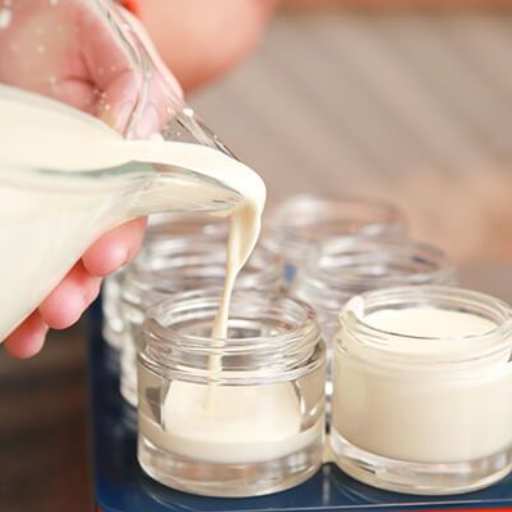
To formulate personal sunscreen that does not damage reefs, non-nano zinc oxide, shea butter, or coconut oil can be blended into the formulation. In order, however, to make a sunscreen that not only complements the reef-safe aspect but also provides adequate sun protection factor (SPF) and is also safe to use, a lot of formulation effort and testing equipment is required, which may be unavailable in a home setup. A dermatologist should also be consulted before using such a formulation. Therefore, I recommend using these homemade formulations with commercially available tested creams. That way, there are hopes of more reliable coverage against the sun while preserving the well with third-world oils. Testing oils and creams alone seems to work in a singular sense.
DIY reef-safe sunscreen recipes and ingredients
In developing a sunscreen to be used on a reef, I start with non-nano zinc oxide as the main active element since this is safe as well as effective for marine life and the environment in general. As a formulator, I integrate shea butter, coconut oil, and beeswax to emulsify the base ingredients to ensure penetration on the skin. Further, I can improve the mixture by combining lubrication oils such as jojoba or almond oil. To further enhance the sun protection factor, I use vitamin E or green tea extract and other safe antioxidants as the additive. However, I know it is hard to control the SPF in homemade lotions, so I am cautious about using these formulations and complementing them with industrial sunscreen products.
Pros and cons of homemade sunscreens
Homemade sunscreens can control the ingredients, allowing for natural and gentle components free of skin irritants. This can be great for sensitive skin or cases of allergies. The downside, however, is the problem of calculating the SPF level because it can be challenging. Without clinical trials, it’s impossible to confirm whether the sunscreen is effective against the sun’s rays, meaning it could ultimately offer weak sun protection. Almost all commercially tested products have a set method for preparation which improves the accuracy and reliability of the product, any inconsistency in these methods of preparation can affect the efficacy of the product. As much as I am fascinated with the concept of homemade products due to their natural composition, caution is highly advised, which is why I use certified sunscreens for complete protection.
Safety considerations for DIY sun protection
When determining whether it is safe or practical to use DIY sunscreens, factors such as specific parameters are very important when evaluating their effectiveness. One of the factors is the Sun Protection Factor, also known as SPF, which measures the product’s ability to shield the skin from UVB rays. Commercial sunscreens are subjected to various tests to backtrack the specific SPF rating, which is provided and, most times, between SPF 15 and SPF 50+. Regarding a DIY formulation, it is slightly impossible to determine this value since no chemical testing is done, which raises safety precautions.
Moreover, the formulation’s effectiveness at blocking UVA radiation should also be considered. Notably, formulations containing specific active components, such as zinc oxide or titanium dioxide, in calculated amounts (generally 5-25%, depending on the coverage needed) achieve a wide-spectrum protection effect. A slight difference in the ingredient’s attributes or the mixing procedure may create an uneven protective film.
Another such factor is the photostability of the product, which indicates how effectively the sunscreen can protect the skin after it has been subjected to sunlight. There is no way a consumer can be assured of this factor in items that are made at home without professional testing. Another key element, underwater resistance – determined with multiplex processes – is significant when a user engages in outdoor activities for longer and is virtually lacking in most hand-tailored formulations.
These caveats emphasize the need for using certified sunscreen to efficiently protect against the harmful effects of UV radiation.
What other ways can I protect coral reefs while enjoying the beach?
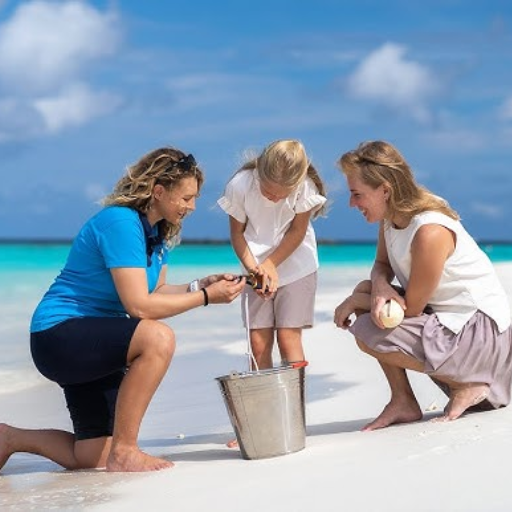
- Use Reef-Safe Sunscreens: Opt for sunscreens labeled as “reef-safe,” which do not contain harmful chemicals like oxybenzone and octinoxate. These chemicals can contribute to coral bleaching and damage to marine ecosystems.
- Avoid Touching Coral: When swimming, snorkeling, or scuba diving, avoid touching coral or stepping on reef beds. Physical contact can harm delicate coral structures and disrupt marine habitats.
- Minimize Sunscreen Use: Wear UV-protective clothing, such as rash guards and hats, to reduce the amount of sunscreen entering the water.
- Dispose of Trash Properly: Ensure that no trash, including cigarette butts and plastics, is left behind on the beach. Proper waste management prevents debris from entering the ocean.
- Conserve Water: Reducing home water consumption can help decrease wastewater that may find its way into marine ecosystems, carrying pollutants harmful to coral reefs.
- Respect Wildlife: Observe marine life from a safe distance. Avoid chasing or harassing animals, which can stress wildlife and disrupt natural ecosystems.
By following these practices, beachgoers can enjoy their time by the ocean while actively contributing to preserving coral reefs for future generations.
Alternative sun protection methods (clothing, shade, timing)
Shifting fishermen’s and shrinking hunting instrument makers’ attention away from the aquatic destruction wrought by UV light, long-sleeved UV-resistant+rashguard+ shirts, wide-brimmed hats, and UV-protectant sunglasses can be worn. At the same time, avoiding going out during peak hours is a good idea. Understandably, little time is eaten by going out early at dawn or late in the daytime when there is little to no solar radiation. It’s all effortless: not only are the health and safety of the populace ensured, but precious ecosystems such as the coral reefs, amongst others, are also safeguarded.
Eco-friendly beach practices beyond sunscreen choice
I make sure to carry a reusable water bottle or any other empty container to lessen the chances of consuming single-use plastic I try not to take unnecessary items with me such as useless bags or recreating plastic containers so there is no extra mess. I go out of my way to clean up after, such as stuffing my bags with trash that I throw away. I also try to help by cleaning the beach if there is an opportunity. I also follow practices that try to keep noise to the bare minimum, such as not attempting to disturb the sedimentaries, parading around the vegetation, and staying away from shore animals. Many marine conservation projects, notably american cultural defense shields, are potential avenues for habitat preservation and restoration while also volunteering.
Supporting coral reef conservation efforts
The preservation of sanctuaries, such as coral reefs, needs the support of actions from individuals, policies, and science. On a more personal note, it is necessary to cut one`s carbon dioxide emissions footprint since climate change increases oceanic temperatures, which would bleach corals. Measures such as cutting down on energy use, utilizing public means of commuting, and backing renewable resource efforts slash greenhouse gas emissions.
Also, engaging in activities such as volunteering while traveling can make a difference. Do not touch the coral, use non-toxic reef sunscreens such as those that do not have oxybenzone, and use tour operators who have eco-certification. Also, assist charities that support the restoration of coral reefs by farming and transplanting the reefs back to damaged ecological areas. Finally, endorsements of the marine protected areas help sustain marine spaces by limiting shore activities such as fishing and construction that would endanger the ecosystems.
References
Frequently Asked Questions (FAQ)
Q: What makes a sunscreen “reef safe” or “reef-friendly”?
A: Reef-safe sunscreens are formulated without harmful chemicals like oxybenzone and octinoxate, which can damage coral reefs and marine life. Instead, they use mineral-based active ingredients like zinc oxide and titanium dioxide, considered safer for aquatic ecosystems.
Q: Why is SPF 30 sunscreen recommended for reef-safe options?
A: SPF 30 sunscreen is often recommended because it provides adequate protection for most people while minimizing the amount of active ingredients that might enter the water. However, reef-safe options are also available in higher SPFs, including SPF 50, for those who need extra protection.
Q: Are all “natural” sunscreen reefs safe?
A: Not necessarily. While many natural sunscreens are reef-safe, checking the ingredients list is essential. Look for mineral-based active ingredients like zinc oxide and titanium dioxide, and avoid chemicals like oxybenzone, octinoxate, and avobenzone, even in products labeled as natural.
Q: How does Hawaiian legislation affect reef-safe sunscreen use?
A: Hawaii has banned the sale of sunscreens containing oxybenzone and octinoxate, which harm coral reefs. This legislation, particularly in places like Maui, has increased awareness and demand for reef-safe sunscreen options, encouraging more brands to develop reef-friendly formulas.
Q: Are water-resistant sunscreen reefs safe?
A: Some water-resistant sunscreens can be reef-safe, but not all are. Look for water-resistant products (ideally for 80 minutes) and use reef-safe ingredients. Brands like Sun Bum and Banana Boat offer reef-friendly, water-resistant options.
Q: Can reef-safe sunscreens be effective for sensitive skin?
A: Yes, many reef-safe sunscreens are suitable for sensitive skin. Mineral-based sunscreens, typically reef-safe, are often gentler on the skin. Look for products specifically labeled for sensitive skin, and consider options with additional soothing ingredients like aloe or chamomile.
Q: How do I choose the best reef-safe sunscreen for the face and body?
A: When choosing reef-safe sunscreen for your face and body, consider your skin type, desired SPF level, and intended use (e.g., daily wear, sport, beach). Look for broad-spectrum protection against UVA and UVB rays. Opt for lighter, non-comedogenic formulas for the face, while body sunscreens can be more substantial. Popular brands like Hawaiian Tropic and Bare Republic offer various reef-safe facial and body options.
Q: Are reef-safe sunscreen sprays as effective as lotions or creams?
A: Reef-safe sunscreen sprays can be effective, but proper application is crucial. Lotions and creams are often preferred as they ensure more even coverage. If using a spray, apply it generously and rub it in thoroughly. Remember that some sprays may not be as environmentally friendly due to potential inhalation risks and uneven application.







